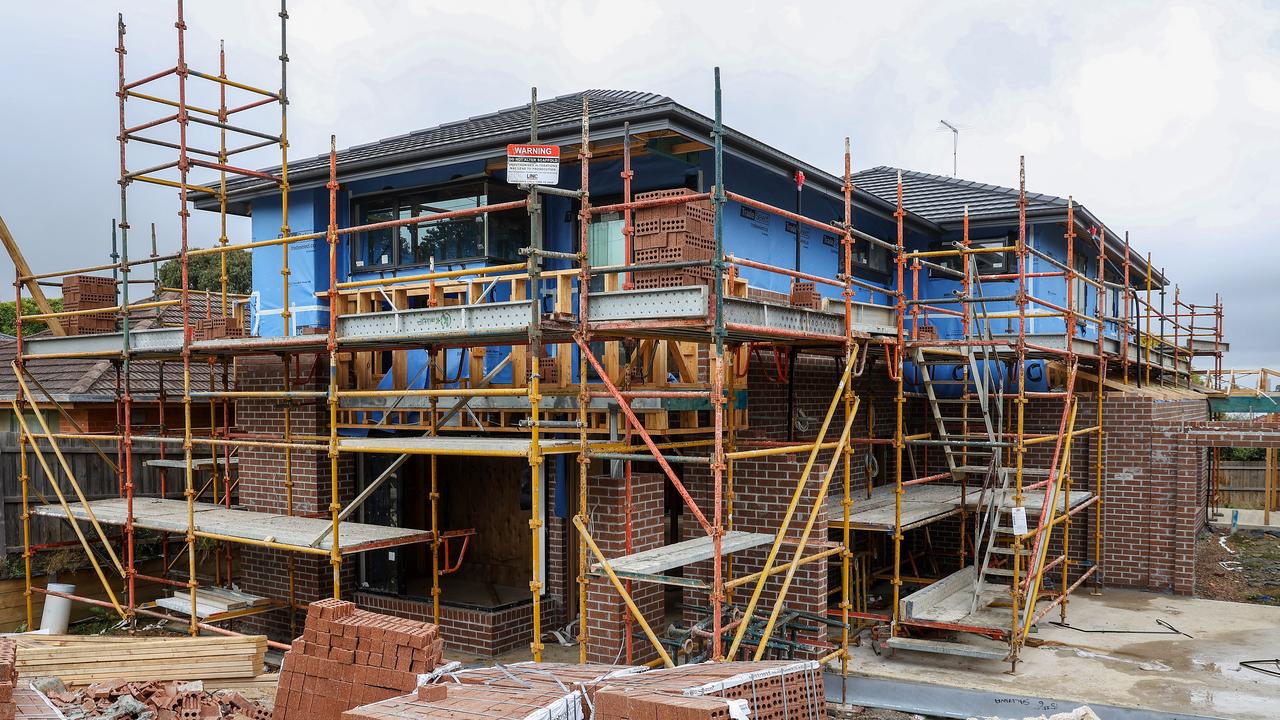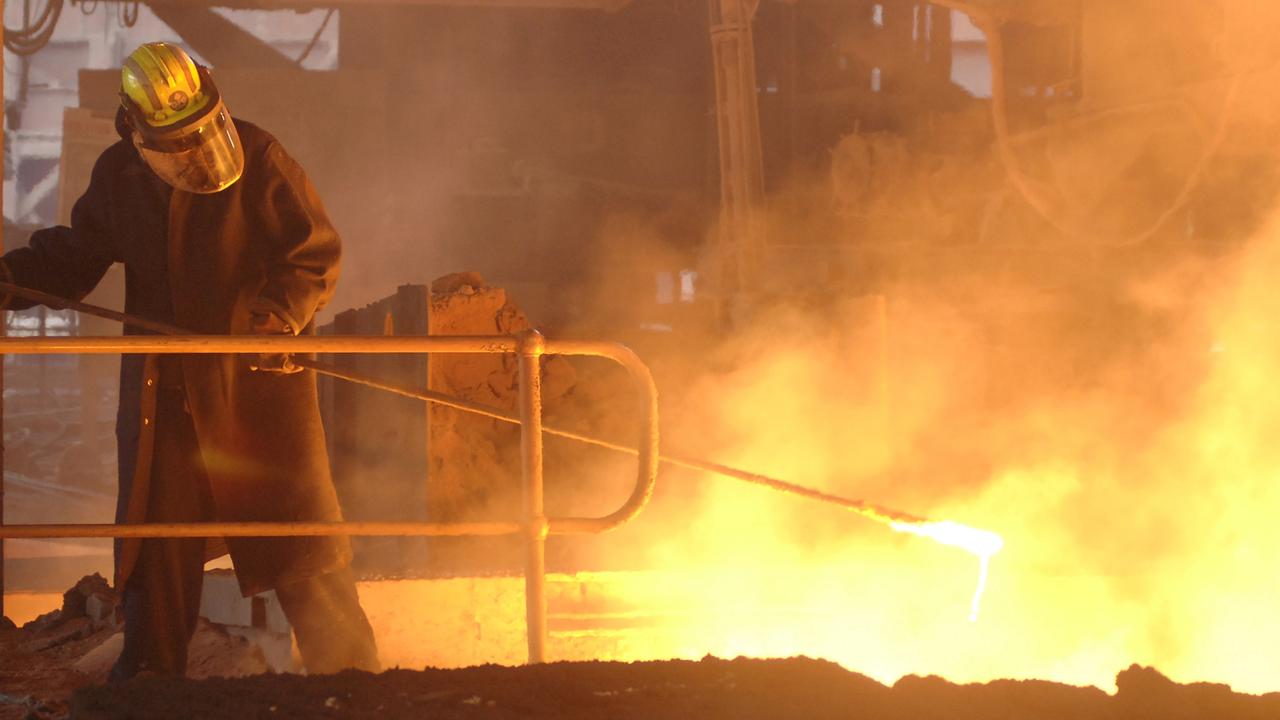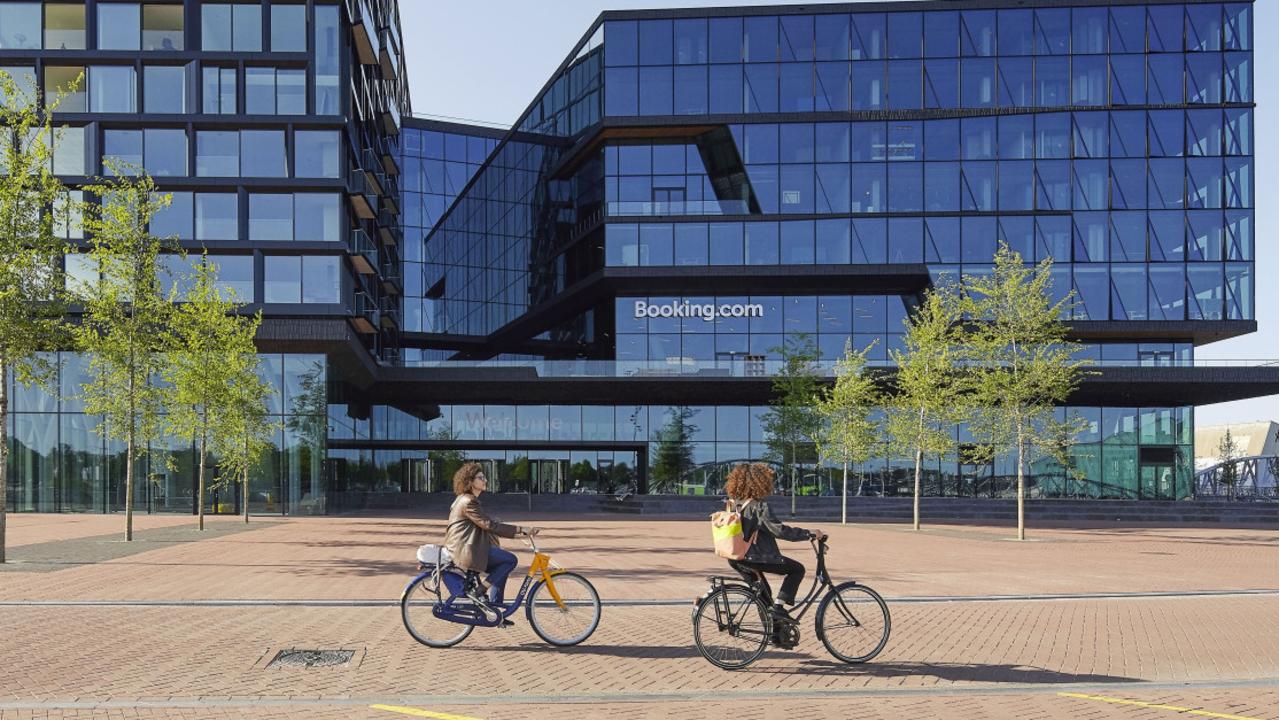Porter Davis collapse: 20 builders in talks to rescue customers
There is some good news for Porter Davis Homes customers with liquidators in talks with 20 replacement builders to help finish some of the projects.

Business
Don't miss out on the headlines from Business. Followed categories will be added to My News.
Liquidators are locked in talks with 20 replacement builders to help finish some of the 1700 jobs left in the lurch by the collapse of Porter Davis Homes.
Porter Davis, Australia’s 12th largest home builder, went under just over a week ago leaving 1500 unfinished homes in Victoria and a further 200 in Queensland.
Liquidators at Grant Thornton have now identified more than 250 homes that they expect will qualify for occupation certificates and be capable of contract completions given how close they are to being finished.
“We are currently in discussion with over 20 builders that have offered assistance to complete homes for PDH customers,” Grant Thornton said. “For those customers where PDH is unable to offer handover, we expect to be in a position to introduce you to a replacement builder within the coming week to discuss how your home build may be completed.
“While we expect that this may offer the most expedient path to completion of your home, we recommend that you seek your own legal advice to ensure that you do not inadvertently compromise your entitlement to insurance cover under (Victoria Managed Insurance Authority or Queensland Building and Construction Commission).”
The Melbourne-based builder had a further 779 clients who had paid deposits, but where work had not started on their projects when liquidators were appointed. They have been told they are at risk of losing their uninsured deposits.
But one industry player, who did not want to be named, said it would be difficult for other builders to take over Porter Davis sites if they have lost supervisors and records are not well kept.
Another solution, he said, was essentially breaking up the company so that larger builders on the estates where Porter Davis has operated – such as Stockland or Mirvac – could finish off the stalled homes.
But he had a warning for customers about the limits of insurance schemes which do not cover all the additional costs.
“If you’re caught in the middle somewhere, it’s going to be tough,” he said.
Michael Hickinbotham, the managing director of South Australia’s Hickinbotham Group, believes the current state of the industry is underpinned by housing unaffordability and has been decades in the making.
“For every Porter Davis there are dozens of smaller companies that are just quietly closing their doors. Subcontractors and supply companies will not get paid,” he said. “All of those chickens have come home to roost because of the Covid challenge. There is a huge opportunity to fix deep-seated problems affecting the industry.
“Residential building processes need to be fast-tracked to get Australian families into their homes sooner. There’s no reason why we can’t and we shouldn’t fast track approvals.
“Governments have a window of opportunity to drive smart policy that supports the industry and Australian families, improves housing affordability and removes the blockages from the system.”
He said in South Australia, Premier Peter Malinauskas had grasped the nettle by announcing the rezoning of land for more than 20,000 allotments.
“This type of policy that improves land supply will help to drive housing affordability,” Mr Hickinbotham said.
Skyrocketing building costs, labour shortages and bad weather have taken a heavy toll on the industry over recent years.
The construction sector hovered between 17 per cent and 19 per cent of total company insolvencies up until the 2018-19 financial year, according to the Australian Securities & Investments Commission, but now sits at around 27.5 per cent.
In some months it’s reached more than 31 per cent, approaching one in every three insolvencies, a near 50 per cent increase compared to pre-pandemic levels.
In the nine months to mid-March, construction company insolvencies tallied an alarming 1494, according to the latest ASIC figures, a 16 per cent increase on the entire 2021-22 financial year and 90 per cent spike on the same period a year ago.
In addition to Porter Davis, the roll-call of failed building and construction companies in the first three months of the year includes Lloyd Group, PBS Building, EQ Constructions, Hamlen Homes, Hallbury Homes and LDC.
Revive Financial head of business restructuring & insolvency Jarvis Archer said governments’ priming of the sector during the pandemic should share some of the blame for the construction sector’s woes.

“The demand for new builds has been declining since the peak in FY21, which appears to have been largely driven by the former federal government’s HomeBuilder grant,” he said.
“This spike in demand has no doubt contributed to the rapid increase in material and labour prices, contributing to the stress, difficult conditions and increased failures. So it seems convenient for governments to allow the sector to be responsible for the impact of its actions.”
Housing Industry Australia chief economist Tim Reardon said “there are no winners” out of the current situation.
“Building activity is expected to slow over the course of the next 12 months as the adverse impact of the rise in (interest rates) flows through the building activity,” he said.
“And it will take some time but all the building work that was underway for Porter Davis will eventually reach completion.”
Mr Reardon said the insurance provisions will kick in and homes will eventually get completed. But it could add to the cost imposts in the sector.

“The increased expenditure flowing through from the intervention with insurance in this situation will keep upward pressure on wages in the sector,” he said.
With the spate of recent collapses, the Association of Professional Builders believes the industry should address the nature of contracts between builders and clients with the incorporation of cost escalation clauses in building contracts.
APB co-founder Russ Stephens said consumers have warmed to the idea of accepting the risk themselves rather than pay for it in contingencies on a fixed priced contract.
Some 33 per cent of Australian builders amended their standard contracts to include a cost escalation clause, according to the State of Residential Construction Industry report commissioned by APB.
Mr Stephens said this clause not only protected the homebuyer, but also the builder.
“Business is all about pricing risk, so for a builder to enter into an agreement where they accept the risk would mean increasing the contract price by around 33 per cent (based on recent history),” he said.
“Given the choice, the majority of consumers have said they prefer to accept the risk with allowances or cost escalation clauses rather than having the cost of that risk priced into their
contracts.”
More Coverage
Originally published as Porter Davis collapse: 20 builders in talks to rescue customers








